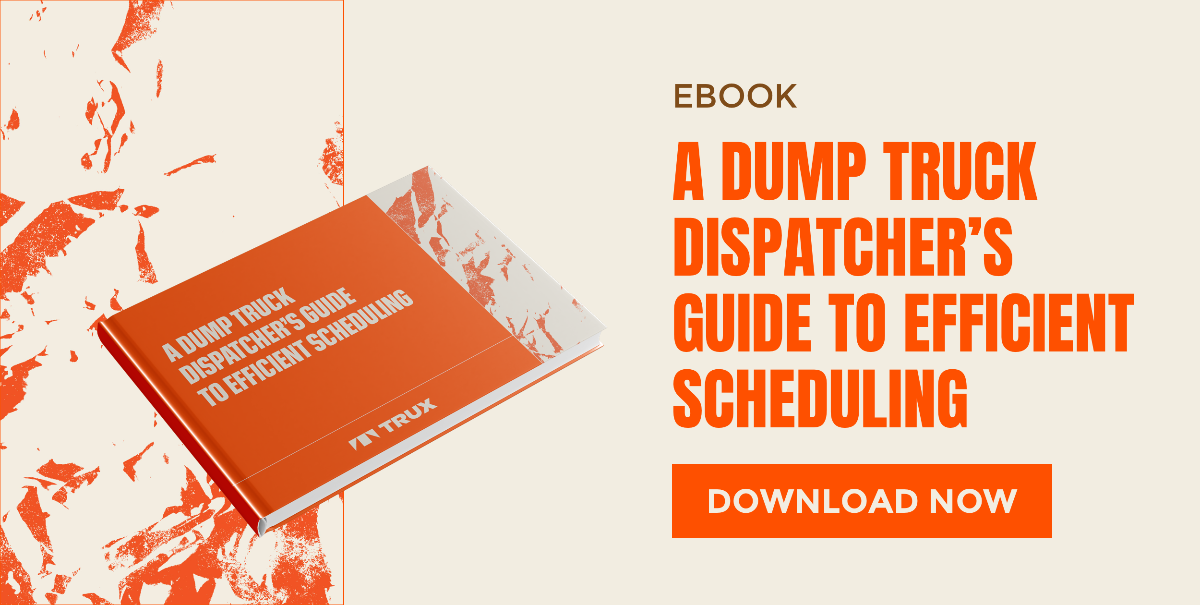Timing matters, whether you’re moving asphalt, gravel, or other materials; every load needs to arrive on time, go to the right place, and be recorded accurately. But without clear visibility into where your trucks are or how many loads have actually been delivered, it’s easy for things to fall through the cracks. You might end up overpaying, waiting on late deliveries, or scrambling to answer questions you should’ve had answers to hours ago.
Real-time load tracking solves that. It gives contractors a live look at their hauling operations—what’s been delivered, what’s en route, and who’s doing the work. And that kind of visibility isn’t just helpful—it’s becoming essential if you want to stay on schedule and on budget.
Click a topic below to jump to the relevant section:
What is Real-Time Load Tracking?
Core Benefits for Contractors
Real Impact on Your Business
Choosing the Right System
What is Real-Time Load Tracking?
Real-time load tracking means you can see exactly where your trucks are, what they’re hauling, and how many loads have been completed, without waiting on phone calls or paper tickets. It’s a live feed of your hauling activity, available on your phone or computer.
This type of tracking doesn’t require expensive GPS units or in-cab devices. Trux uses the phones your haulers already carry to send updates as they work. That means even if you’re using hired haulers, you can still get accurate, real-time data.
The goal isn’t just to know where trucks are; it’s to keep jobs moving, spot problems early, and make sure you're only paying for the work that gets done.
Core Benefits for Contractors
1. Full Visibility—No More Guesswork
When you can see where every truck is and what it’s doing, you're not relying on texts, calls, or assumptions. You know how many loads have been delivered, what’s still on the road, and whether haulers are sticking to schedule. That clarity helps keep crews and equipment ready when materials show up.
2. Pay Only for the Work Done
Without tracking, it’s easy to get stuck paying for idle time or unverified shifts. With time-stamped data and digital shift records, you can confirm exactly when work started and stopped. That makes it easier to spot overcharges and avoid paying for time that wasn’t worked.
3. Faster Payments, Less Paperwork
Digital load slips eliminate the mess of chasing down tickets at the end of the day. Everything gets logged automatically. Your team can invoice faster and clean up the back office without digging through stacks of handwritten notes.
4. Control Costs in Real Time
When you see your hauling costs live—by load, by job, or by hauler, you can react before small issues turn into expensive problems. If a job is burning more truck hours than expected, you’ll know it while it’s still fixable.
5. Stay Flexible with Mobile Dispatching
Things change on job sites. With real-time tracking, dispatchers can adjust hauler assignments on the fly and reroute trucks without a dozen phone calls. That kind of flexibility helps you keep work moving, even when the unexpected happens.
Real Impact on Your Business
Real-time load tracking isn’t just a tool—it’s a shift in how you manage your operations. When you know exactly what’s happening with your hauling in the moment, you make better decisions, faster.
You’ll spend less time waiting on deliveries and more time getting work done. Delays go down. Job site productivity goes up. And when the paperwork takes care of itself, your team can focus on the work that actually moves the project forward.
Better tracking also improves your cash flow. When loads are tracked and verification is easier, invoicing happens sooner, and payments come in faster. That means fewer headaches and steadier income.
And if you’re working with clients who expect visibility, offering real-time updates builds trust. It shows you’re serious about communication and accountability—two things that go a long way in this industry.
Choosing the Right System
In heavy construction, tracking systems aren’t one-size-fits-all. Some options require installing hardware in every truck, which can be a hurdle, especially when you're using a mix of company-owned and hired haulers. If you can’t track your hired trucks, you’re still left guessing on a big piece of the operation.
Trux offers a more flexible approach that uses the phones drivers already carry. That means you can track all your haulers, without worrying about setup time, equipment installs, or compatibility issues. It also lets you bring in outside trucks when needed and still maintain full visibility.
At the end of the day, a good system should work the way you do. It should help you stay in control without slowing you down.
If you're still relying on calls, clipboards, and paper tickets to manage hauling, you're missing opportunities to run tighter jobs. Real-time load tracking isn’t just about tech—it’s about making sure every load counts.


